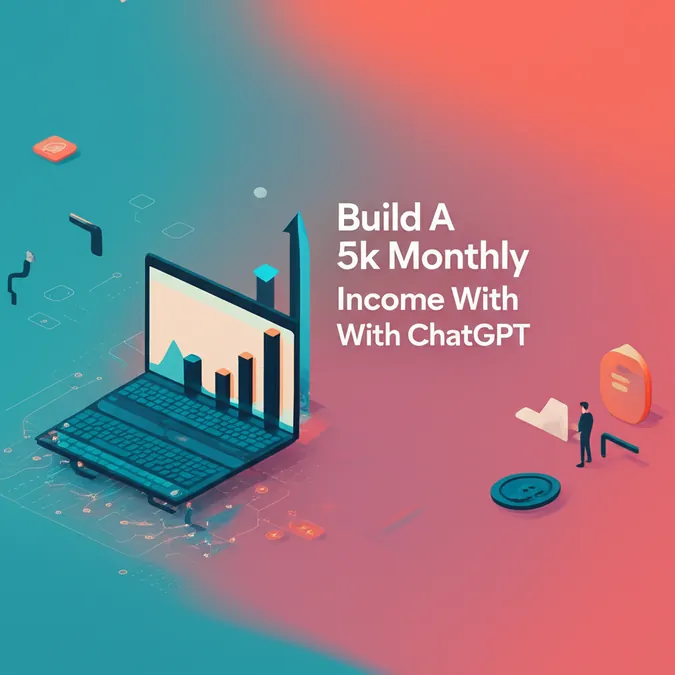Craft A Killer LinkedIn Profile With ChatGPT

Your LinkedIn profile is your digital business card, but many professionals waste it with lackluster content that fails to create meaningful connections. Research shows that complete LinkedIn profiles get 30% more weekly views, and users with optimized profiles are far more likely to attract recruiters and new opportunities. Instead of hiring expensive copywriters or spending hours writing, you can use ChatGPT to craft profile sections that showcase your expertise and actively generate leads.
Here are five powerful ChatGPT prompts that will transform each critical section of your LinkedIn profile from a static resume into a results-generating machine.
For best results, work through these prompts in order. Each section builds on the previous one to create a cohesive, strategic LinkedIn profile.
Upgrade Your LinkedIn Headline
Your LinkedIn headline appears everywhere your name does, yet most professionals waste this prime real estate with generic job titles. Use it to communicate your unique value proposition.
Act as a LinkedIn optimization expert. Create a compelling LinkedIn headline for a [your profession] with [X years] of experience who specializes in [your specialty] and helps [target audience] achieve [specific outcome]. The headline should be under 220 characters, include relevant keywords for searchability, and clearly communicate the value I provide. Make it attention-grabbing while maintaining professionalism.
This prompt forces ChatGPT to focus on outcomes rather than just job titles.
Craft An Engaging LinkedIn Summary
Your LinkedIn summary, or "About" section, has the most space to tell your professional story and convince visitors to connect. Most summaries read like boring biographies when they should function as compelling sales pages.
Write a LinkedIn summary for a [your profession] with expertise in [key skills/areas]. Structure it to first hook the reader with a compelling opening about a common problem my target audience faces, then position me as the solution by highlighting my unique approach and key achievements, using specific metrics where possible. Include a brief personal anecdote that humanizes me, then end with a clear call to action encouraging people to connect or reach out. Keep it conversational yet professional, with a length of under 2,600 characters.
This creates summaries that immediately engage your target audience and position you as someone who understands their pain points.
Optimize Your Experience Descriptions
Too many LinkedIn users simply list responsibilities instead of achievements in their experience section. This is a missed opportunity to demonstrate your impact.
Rewrite this job experience for LinkedIn: [paste your current job description]. Transform it from a list of responsibilities into achievement-focused bullet points that demonstrate impact and results. Use action verbs, include specific metrics and outcomes where possible, and highlight skills that are relevant to my target audience of [describe your ideal connections/clients]. Make each point start with a strong action verb and focus on the value I delivered rather than just what I was responsible for.
This prompt transforms generic descriptions like, "Managed social media accounts," into powerful statements like, "Increased social media engagement by 340% and generated $2.3M in attributed revenue through strategic content campaigns."
Generate Keyword Rich Skills
LinkedIn's search algorithm heavily weights the skills section, especially with the rise of skills-based hiring. An analysis of almost 9 million LinkedIn profiles found that profiles listing more skills, particularly managerial ones, are associated with higher-paying jobs.
Analyze the current job market and industry trends for [your profession/industry] and suggest 20-30 relevant skills I should add to my LinkedIn profile. Prioritize skills that are: 1) Currently in high demand by employers/clients, 2) Relevant to [your specific niche/specialization], 3) Likely to be searched by my target audience of [describe your ideal connections], and 4) A mix of technical hard skills and valuable soft skills. Explain why each skill category is important for my professional positioning.
This ensures your skills section works as a discoverability tool rather than a random list of capabilities.
Create Compelling Calls To Action
Every section of your profile should guide visitors toward a specific action. Most profiles lack clear direction, leaving visitors unsure of the next steps.
Create five different call-to-action statements I can use throughout my LinkedIn profile to encourage [specific desired action - connections, website visits, consultations, etc.]. Each CTA should be tailored to different sections of my profile and various stages of the relationship-building process. Make them specific to my role as a [your profession] serving [target audience], natural-sounding rather than salesy, and focused on the value the other person will receive by taking action.
This approach generates CTAs that give people clear and compelling reasons to engage with you.
Your LinkedIn profile works around the clock to either attract or repel professional opportunities. By using these five ChatGPT prompts, you're turning it into a strategic tool that actively generates the career results you deserve, even while you sleep.


